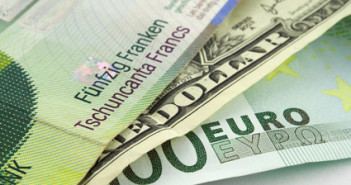The initial estimates for purchasing managers’ indices came out better than expected and provide hope that the euro-zone could avoid an outright recession.
The data joins other encouraging figures from the continent’s powerhouse: Germany. Could Europe enjoy some stability or will the debt crisis wash everything down the drain?
The flash data released by Markit shows that the euro-zone’s services sector returned to growth in January: the PMI surprised by topping the 50 point mark separating between contraction and expansion.
The manufacturing sector is still in contraction zone, but it also exceeded expectations and jumped from 46.9 to 48.7 points.
In Europe’s No. 2 economy, France, the diversion between the two sectors is wider: the services sector enjoyed a second month in growth zone (51.7 points) while manufacturing is lagging, with a drop to 48.5 points.
German Strength
Germany surprised and enjoys growth in both sectors. Manufacturing wasn’t expected to return to growth, but surprised and scored 50.9 points. The services sector also pushed forward, with healthy growth at 54.5 points, the fourth consecutive month of growth.
The locomotive of the euro-zone saw a positive turnaround in another indicator: the ZEW Economic Sentiment leaped from -53.8 to -21.6 points, far better than expected. Yes, this number is negative and still expresses pessimism.
But, it’s important to remember that this indicator is usually a lower-leaning one. Wednesday’s IFO figure, which is usually more positive, will shed more light on the state of the German economy.
The news of this better than expected economic activity can be easily overshadowed by the debt crisis. Greece is still wallowing in the mire, with a default looming.
It’s uncertain if Draghi’s huge LTRO operation managed to fully stabilize the system and prepare it for defaults.
EUR/USD is on high ground, trading between 1.30 and 1.3060, where it stood in the first days of the year.
For more on the euro, see the EUR/USD forecast.



